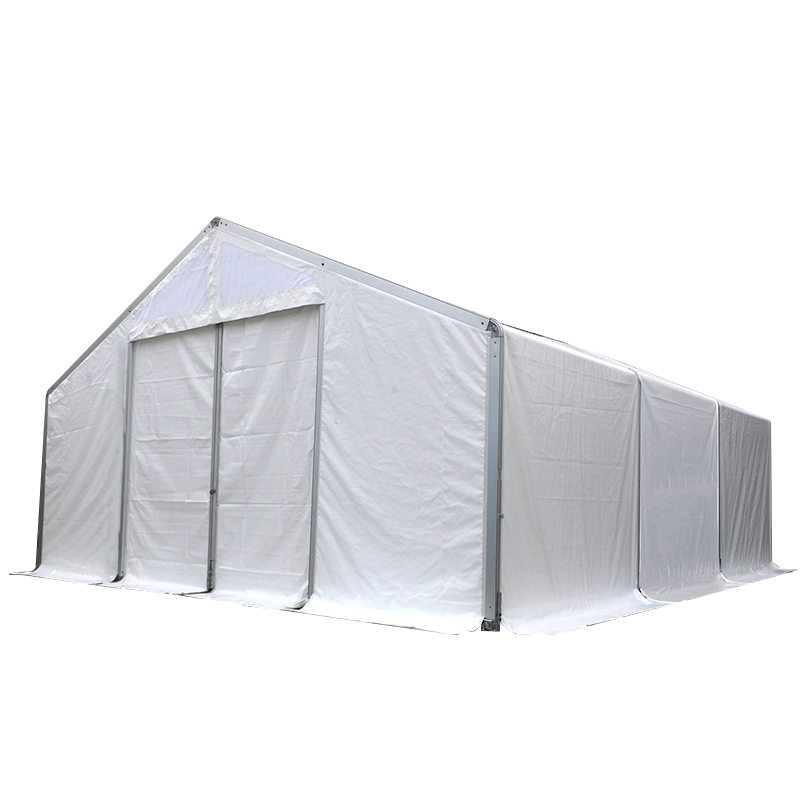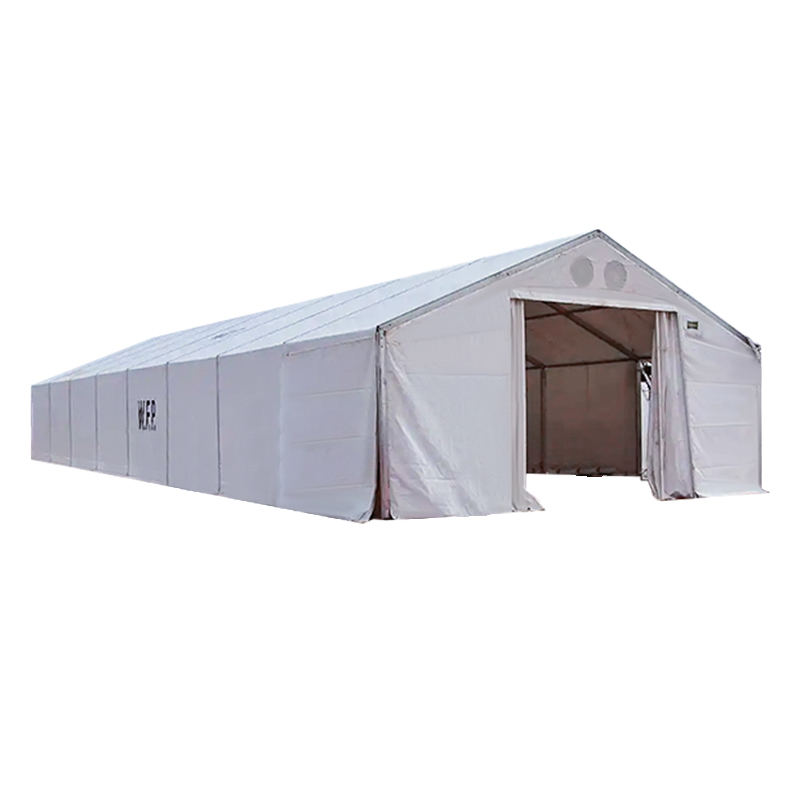-
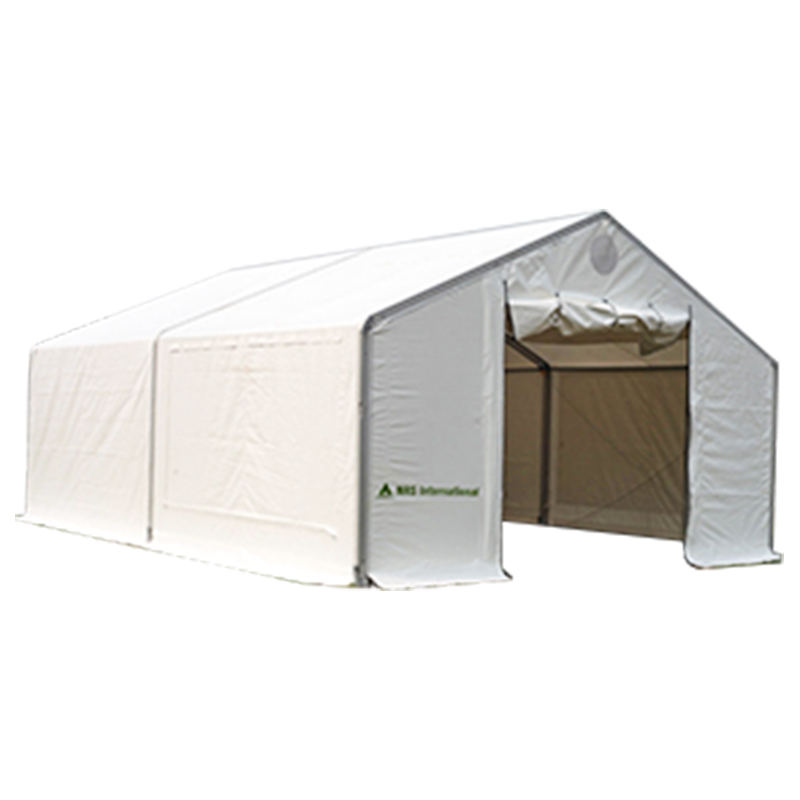 IFRC/ICRC/WFP/IOM Standard 6.5x8m Portable Tent Mobile Storage Units(MSU)
IFRC/ICRC/WFP/IOM Standard 6.5x8m Portable Tent Mobile Storage Units(MSU)Mobile Storage Unit
Mobile Storage Unit Manufacturers
Products & Solutions
CONTACT US
-

+86 15695147631
-

-

No.9 Kangmin Road, Automobile industry Park, Yizheng City, Jiangsu Province, China
A mobile storage tent is generally deployed in an emergency situation. Non-governmental organizations use these tent structures for temporary storage of food and non-food items during the relief and recovery phase of the emergency situation.
When mobile storage tents are deployed and installed, the available storage capacity is boosted, whilst existing structures and local constructions are rehabilitated.
Easy transportation
The tent has been designed specifically to be air freighted following a natural disaster, and has a lightweight aluminum or strong steel frame and space-efficient packaging. This allows for cost effective transportation to wherever on the planet disaster strikes.
Endless options and conversions of usage
Our tent design team has ensured our tents can be converted to any given disaster response need. Our high quality and durable structures offer various options to ensure they are suitable in any challenging situation.
The main application for the tent is as a warehouse. The fabric buildings, which are safe to construct and logistically optimised, are designed to be used in all climates around the globe.
Other Application: Accommodation, Distribution centre, Hospital, Kitchen , Canteen, Recreation, Offices, School
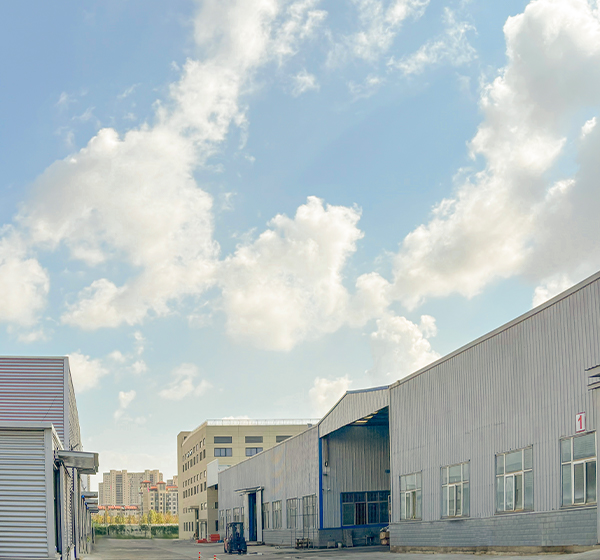
-
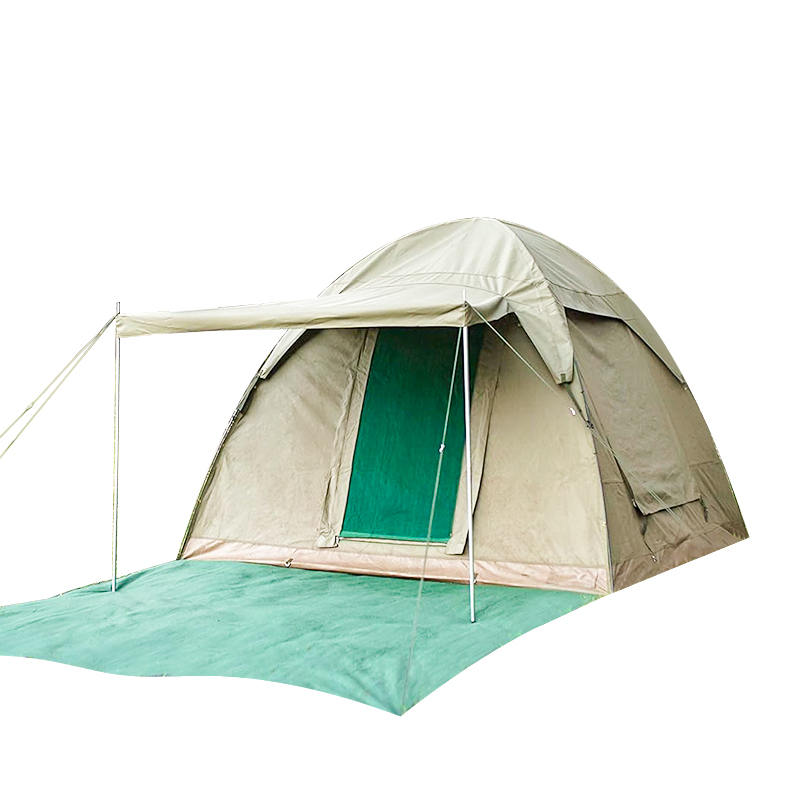
What Do Waterproof Ratings for Camping Backpacking Tents Actually Mean? Waterproof ratings (measured in millimeters, mm) quantify a tent’s ability to resist water penetration, based on standardized hydrostatic head testing. The rating represents the height of a water column the t...
READ MORE -
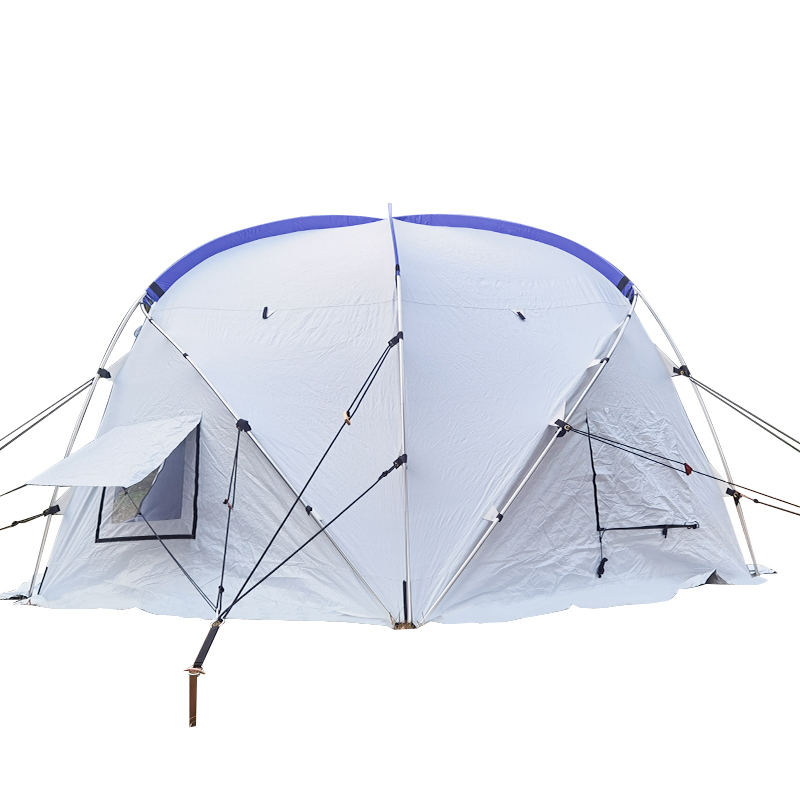
What core fabrics lay the foundation for windproof and waterproof relief tent? The windproof and waterproof performance of relief tent starts with the selection of core fabrics, which must withstand harsh natural conditions such as strong winds, heavy rains, and even hailstorms i...
READ MORE -

What Cost Advantages Make Warehouse Tents More Economical Than Traditional Warehouses? The core appeal of warehouse tents lies in their significant cost savings, which can reach up to 50% compared to traditional brick-and-mortar warehouses. First, the construction cost is far low...
READ MORE
1. Mobile storage units primarily combine mobility and storage functions. What key structural features must they possess to ensure both convenient movement and stable storage, avoiding inconvenience in movement or wobbling during storage?
Mobile storage units require breakthroughs in three key areas: mobile structure, load-bearing design, and stable protection, balancing mobility and storage requirements. The mobile structure requires high-load-bearing universal wheels (each wheel with a load capacity of ≥ 50kg) with locking brakes, allowing for 360° steering during movement and locking brakes to prevent slipping when stationary. Some larger units can be designed with towing ports for transport with forklifts or trailers, meeting both short-distance and long-distance transport needs. For load-bearing design, the frame must be constructed of thickened steel (≥ 1.2mm thick) or high-strength aluminum alloy, and the bottom load-bearing panel must be constructed of non-slip and wear-resistant materials (such as cold-rolled steel or reinforced plastic) to ensure that heavy items (such as tools and equipment accessories) remain stable when stored. For stability and protection, the unit features internally designed, height-adjustable partitions to disperse heavy objects and prevent shifting the center of gravity. External anti-tip brackets can be installed, especially for storage heights exceeding 1.5 meters, to prevent tipping during movement or placement. This ensures a dual user experience, combining mobility with stability.
2. The size and capacity requirements for mobile storage units vary significantly across different scenarios (such as temporary storage at construction sites, home moving, and outdoor event storage). How can the unit's size design be flexibly adapted to meet diverse storage needs?
To meet the size requirements of various scenarios, flexible adaptation is achieved through modular design, a retractable structure, and multiple basic models. For modular design, standard unit modules (such as the 60cm × 40cm × 80cm basic model) are designed. These units can be connected using snap-on connectors, allowing them to be combined into larger units for building materials at construction sites and smaller units for clothing and miscellaneous items during home moves. Even after being connected, they retain mobility. The retractable structure features some units with extendable side panels, allowing for expansion from 50cm to 80cm in width and adjustment from 60cm to 100cm in height. This allows for flexible capacity adjustments based on the amount of supplies during outdoor events, avoiding wasted space or insufficient capacity. The versatile basic model offers three fixed-size units: small (≤50L), medium (50-150L), and large (>150L). The small size is suitable for storing tools and documents, the medium for household items, and the large size for construction equipment and event supplies. Users can directly select the appropriate size based on the scenario without complex adjustments.
3.Mobile storage units often need to store different types of items (such as fragile items, tools and equipment, clothing, and other items). How should the internal layout and accessory design be segmented to achieve categorized storage and secure protection?
To achieve categorized storage and secure protection, the internal design should focus on "tiered partitions," "exclusive accessories," and "protective details." For tiered partitioning, removable dividers (adjustable 5-10cm spacing) can be designed to divide the space into multiple levels, with the upper level storing lightweight clothing and documents, and the lower level for heavier tools. Some units can also be equipped with vertical dividers, dividing the same level into multiple independent areas for storing tools and accessories of different sizes. For specialized accessories, drawers or storage boxes with cushioned padding are provided for fragile items (such as glassware and electronic components) to prevent damage from shaking and collision. Hanging boards or hooks are designed to hang wrenches, screwdrivers, etc. for easy access and to prevent friction. Waterproof storage bags are provided for clothing and other miscellaneous items to prevent moisture and mold. For protective details, rounded interior corners are designed to prevent sharp edges from scratching items. The dividers are securely connected to the frame to prevent them from falling under load, ensuring the safe storage of various types of items.
4.Mobile storage units may be used outdoors (such as construction sites and event venues) or in humid environments (such as basements and during rainy season moves). What should be focused on in material selection and protective treatment to prevent moisture, rust, and damage?
To cope with outdoor and humid environments, the three key areas of improvement are material weather resistance, protective coating, and sealing design. For the frame, galvanized steel (zinc coating thickness ≥ 8μm) or 304 stainless steel is preferred to prevent rust from outdoor rain and humidity. The front and side panels should be made of waterproof reinforced plastic (such as PP, ABS) or film-coated plywood, with a waterproof rating of IPX4 to prevent water from seeping in. For the protective coating, metal components are electrostatically sprayed (coating thickness ≥ 60μm) to enhance corrosion resistance. Plastic components are treated with UV inhibitors to prevent aging and cracking caused by outdoor exposure. Regarding sealing design, the unit door (if equipped) must be equipped with waterproof tape to seal the door gaps and prevent rainwater from seeping in. A tilted roof can be designed to accelerate the shedding of rainwater and prevent water from seeping in. Some units can be equipped with a moisture-proof layer (such as a silica gel desiccant cartridge) and a dehumidifier pack placed inside, especially when used in basements or during rainy seasons, to reduce internal humidity and protect items. The processing and protective treatment of these materials can leverage Yangzhou Mailenda Outdoor Products Co., Ltd.'s extensive experience in processing steel, plastic, and other materials to ensure weather resistance.
5. What are the differentiated functional and configuration features of the Mobile Storage Unit for individual users (home turnover, outdoor camping equipment storage) and corporate users (construction site storage, event material management) to meet the needs of different user groups?
For both individual and corporate users, precise adaptation can be achieved through "functional simplification/enhancement" and "configuration differentiation." The personal model focuses on convenience and value: a lightweight frame (weighing ≤ 15kg) for easy transport; basic dividers and waterproof storage bags for storing family clothing and camping gear; silent universal wheels to minimize noise disturbance to neighbors; and affordable pricing, making it suitable for short-term use. The corporate model emphasizes durability and professional functionality: a frame constructed of thickened steel (weighing ≥ 30kg), with a single unit bearing a load capacity of ≥ 300kg, suitable for storing construction materials and large supplies for events. Reinforced door locks (such as anti-theft padlock holes) prevent loss of supplies. Some construction models can be equipped with dust covers to prevent dust contamination of construction materials; and event models can be designed with slots for signage to facilitate the classification and labeling of supplies. Customization is also available, with the size and internal layout adjusted to meet corporate needs. This customized production capability leverages Yangzhou Mailenda Outdoor Products Co., Ltd.'s large-scale production system (annual production capacity exceeds 120,000 units of various products), enabling rapid response to corporate bulk orders.
6. Mobile Storage Units may experience problems such as wheel wear and loosening of shelves over long-term use. Are these vulnerable parts replaceable? Is the replacement process convenient and easy, requiring no specialized personnel?
To reduce maintenance costs, vulnerable parts must be highly versatile, quick-release, and easily replaceable. Wheels, as core, vulnerable components, must utilize standardized interfaces (such as a four-way threaded interface or snap-on mounting). Users can simply purchase wheels of the same specification and replace them with new ones, requiring no tools or requiring only a wrench. Some wheels have removable bearings, allowing individual bearing replacement without replacing the entire wheel. Shelf loosening is often caused by worn connectors. Spare connectors (such as clips and screws) are required. These connectors should be hand-tightened and can be tightened without a screwdriver. If a shelf is damaged, separate shelves of the same size can be purchased and quickly installed using slots or screws. Furthermore, brands must provide a list of vulnerable parts and replacement instructions, clearly indicating part specifications and replacement steps. Users can purchase replacement parts online, avoiding reliance on specialized personnel and reducing maintenance complexity and costs.
7. If a mobile storage unit needs to implement expansion functions such as "storage + temporary workbench" or "storage + temporary shelter," what interfaces or accessories should be reserved in the structural design to quickly achieve functional conversion and improve cost-effectiveness?
To achieve functional expansion, advance design is required for "structural provisions" and "expansion accessories." "Storage + Temporary Workbench": A workbench interface (such as slots and screw holes) is reserved on the top of the unit. A foldable workbench can be installed when needed to store tools and serve as a temporary work surface. When not in use, it folds away to minimize space. Some units can be designed with flip-up panels that, when lowered, function as a small workbench, accommodating temporary assembly on construction sites or simple home repairs. "Storage + Temporary Shelter": A sunshade/rain shelter interface is reserved on the top of the unit, equipped with a removable awning. When used outdoors, the awning can be installed to provide shade and protection from the sun and rain, while also providing a temporary rest area underneath. When camping, the unit can be used to store equipment and the underside can be used as a dining area, improving space utilization. Expansion accessories must have a universal interface with the unit body and can be installed without modification. Accessories can be purchased separately, and users can flexibly add them according to their needs, improving cost-effectiveness through "basic storage + expansion functions".


 English
English 中文简体
中文简体 Español
Español 日本語
日本語 русский
русский عربى
عربى